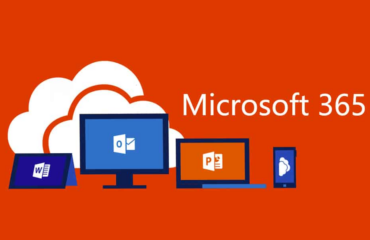
A popular description of cloud is that it’s for everyone, but not for everything. You’re almost certainly using some form of cloud services to run your business today, whether that be for email, identity management, file storage, backups, etc. The harder question is, “Should I move everything to the cloud?” If you’re a small business running a handful of servers, moving these servers to the cloud can be a difficult decision to make.
Goals and priorities
The strong use cases for cloud infrastructure are well established:
- You are concerned about the physical security of your data
- You maintain ISO quality standards or are subjected to data security audits
- You have a dynamic, burstable workload
- You require high availability enterprise-level offerings, such as database clustering or load balancing
- Your business focus is primarily online (i.e., e-commerce)
What about a small business with a static workload? Let’s say you have a few servers in a closet running basic services… file storage, printing, Active Directory, and a business application. Your current hardware is aging and in need of refresh, and your business software and operating systems need to be updated. Security is a concern, but managing cost will strongly influence your decision. Is cloud the right fit?
To decide, we need to define a clear set of goals and priorities. We also need to clearly understand the risks associated with a migration, and accept that a migration might force you to rethink your daily workflow.
The case for cloud
In a nutshell, cloud provides superior flexibility and security. Cloud solutions are hosted in world class, physically secure datacenters that are hardened against power failure and network outages. Virtual machines run on enterprise class hardware built to withstand failure without service interruption. These datacenters carry inventory for hardware replacement and are staffed by employees following audited processes. Additional server, network, and storage resources are literal mouse-clicks away.
This, of course, all comes at a cost that is a huge bargain compared to trying to achieve the same standards on your own… but may also be more than what a small business absolutely needs to function. Having said that, cost shouldn’t be your only consideration when comparing cloud and on premise solutions. You’re trying to maximize value, not necessarily minimize cost. Do any of the following items apply to you?
- You have a decentralized / distributed workforce that is dependent on your on premise servers
- You have disaster recovery needs that may steer you toward an offsite solution
- You are concerned about managing future growth efficiently
- You want to avoid capital expenses or prefer an operational expense model
- You are subject to data privacy or data security compliance requirements, such as HIPAA and PCI
If so, they make cloud a more valuable offering and may help justify a marginal increase in long-term cost.
The case against cloud
Now, let’s discuss reasons not to move to cloud. The primary concern we have for customers is that moving servers from your local, high speed network to the internet reduces bandwidth and increases latency. In most cases, speed and latency on your local network is an order of magnitude better than what you’ll experience online, and so if we move the servers without making any other changes, you may notice a reduction in performance. Saving files, running applications, etc. may take a bit longer… maybe not long enough to notice… but maybe long enough to be frustrating. It’s hard to say, because everyone’s environment is different.
This may sound like a show stopper – and in some cases it can be – but there are also ways to address this.
- Upgrade the internet service at your office. Choose the best available speed, and choose fiber service over cable if possible.
- Consider moving your line of business application to an online subscription. If the software publisher offers an online service, you may benefit from better performance and will no longer have to worry about keeping the software up to date.
- Consider using a remote desktop solution where you remote into a cloud server or virtual desktop to access your line of business application. The drawback is that this complicates video conferencing, so if that is part of your daily routine, those functions will still need to be performed using your local computer.
The best of both worlds?
Of course, there’s another alternative… a little bit of both. This is called a hybrid solution and can allow you to move to cloud in steps rather than all at once. You may even be able to use your aging hardware for less critical functions, further extending its useful lifetime.
A simple example is using Azure Files with Azure File Sync. In this model, your files are stored in the cloud with a small repository of frequently used files on site. This gives you high performance, just like having your own file server, but scales using the cloud. Best of all, your users continue to map network drives as they do today and are unaware of the cloud services you’re employing behind the scenes. From their perspective, everything continues to work as normal.
Another possible approach is deploying cloud failover, which we describe in more detail here. Essentially, this enables you to failover to cloud transparently for backup and disaster recovery purposes. Your migration to cloud and cloud failover process are essentially the same thing… so you may decide the implement cloud failover for business continuity reasons and then discover that running on cloud suits you well enough to move to cloud full time.
Final thoughts
If you feel like a cloud solution might be right for you, we can offer several options that allow you to start small and grow over time. Ultimately, we want you to be on the platform that provides the best experience and value… regardless of whether your servers are in your office or in the cloud.
— The Complete IT Team



